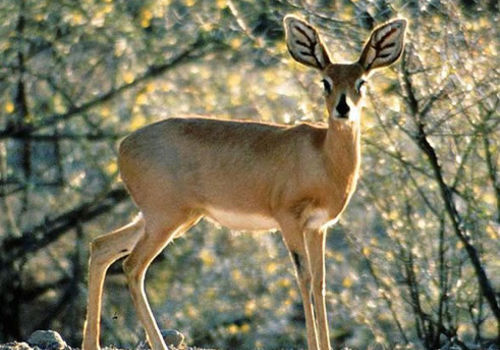
Steenbok
Raphicerus campestrisSteenbok
Introduction: The steenbok (Raphicerus campestris) is one of the most common species of antelope in Namibia, partly because during the dryer winter months it forages and rakes the ground, sometimes digging 'shoulder-deep' to excavate nutritious tubers, bulbs and roots that have a relatively high moisture content. Steenbok seek cover under taller trees and clusters of bushes and are often observed feeding in overgrazed fields and roadside verges.
A characteristic of the steenbok is its pointed face, allowing access to a variety of thorny plants, without fear of laceration. Steenbok are often seen alone, in pairs or in small groups due to their highly organised territorial systems.
Distribution: Throughout Namibia
Diet: Steenbok are able to survive independently of free water; a highly selective browser of young leaves, flowers, fruits and shoot tips.
Colouring: White underparts and buttocks blending into a reddish-brown coat.
Breeding: Births occur all year round. The mother conceals her baby for the first 3-4 months for feeding purposes and eats the baby's faeces and drinks the urine to reduce odour levels and thus enable its presence from predators to be concealed.
Size: Average height at the shoulder is 52cm.
Weight: 11kg
Klein Windhoek

